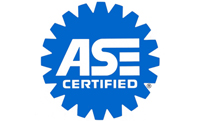Emission
control systems and what they do
Automotive-generated pollutants come from three sources:
tailpipe, crankcase blowby vapors and fuel vapors that
evaporate from the fuel tank and carburetor.
Crankcase blowby vapors are eliminated as a source of
pollution by recirculating the vapors into the engine for
reburning through the Positive Crankcase Ventilation (PCV)
system.
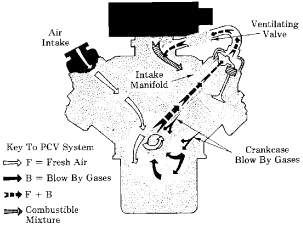
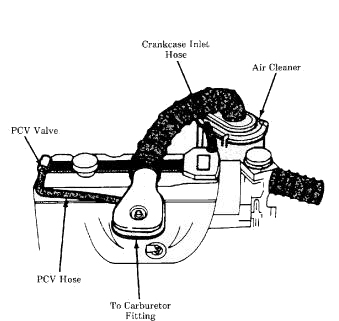
The PCV valve acts like a small calibrated vacuum leak,
allowing manifold vacuum to siphon air through the
crankcase, taking with it moisture and blowby gases that
would otherwise pollute the atmosphere. As a side benefit,
it extends motor oil life.
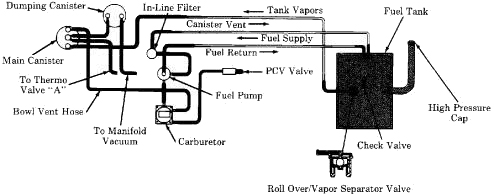
Evaporative emissions have been eliminated by sealing the
fuel system and storing vapors in a charcoal canister. When
the engine starts, a purge valve on the canister opens,
allowing manifold vacuum to siphon vapors into the intake
manifold to be burned in the engine.
There are 3 primary tail pipe pollutants:
Carbon monoxide (CO) is formed whenever there is not enough
oxygen to completely burn the fuel. The richer the mixture,
the greater the quantity of CO produced.
Carbon monoxide is the worst pollutant of the three because
it is deadly. CO emissions are reduced by keeping the
air/fuel ratio lean, by preheating incoming air and manifold
to aid fuel vaporization, and by converting the remaining CO
into harmless carbon dioxide in the catalytic converter.
Hydrocarbon (HC) emissions are unburned gasoline. HC is not
directly harmful, but it contributes to smog formation. A
fouled spark plug, a leaky exhaust valve, or a fuel mixture
so lean it won't ignite (lean misfire) can all allow
unburned fuel to enter the exhaust.
HC is reduced by maintaining a balanced air/fuel mixture, by
making sure compression and ignition are OK, and by
reburning any HC remaining in the catalytic converter.
Oxides of Nitrogen (NOX) are formed in the combustion
chamber when temperatures rise above 2,500>1|F and nitrogen
begins to react with oxygen. Lean air/fuel mixtures burn
hotter and increase NOX.
Though not as poisonous as carbon monoxide, NOX irritates
the eyes, nose and lungs, and contributes to ozone depletion
and acid rain formation.
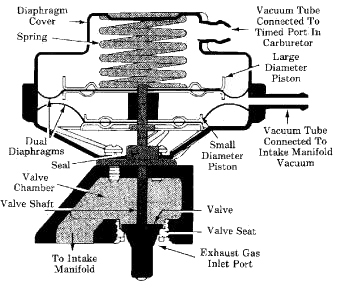
NOX is reduced by the Exhaust Gas Recirculation (EGR)
system, and by three-way catalytic converters.
The EGR system allows a small amount of exhaust gas to be
siphoned back into the intake manifold to slightly dilute
the incoming air/fuel mixture. This lowers combustion
temperatures to reduce NOX. It also helps prevent
detonation.
The catalytic converter contains a ceramic honeycomb or
ceramic pellets coated with a thin layer of platinum and
palladium metal. In three-way converters, a third catalyst
(rhodium) is included to reduce NOX.
The converter acts to reburn pollutants. To do so, it needs
extra oxygen received from an air pump or an aspirator
valve.
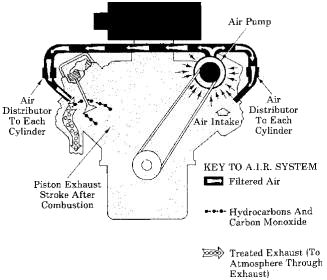
Arrows show air flow through the system. Air travels from
the air filter to each cylinder where it mixes with
hydrocarbons and carbon monoxide and then escapes into the
atmosphere through the exhaust system.
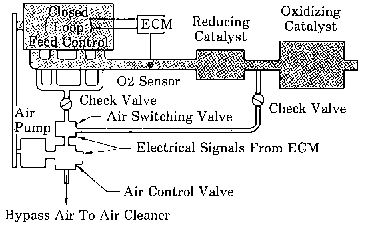
The air pump is belt-driven and feeds air to the exhaust
manifold through a diverter valve and check valve. The
diverter valve dumps excess air back into the atmosphere
when it's not needed (during deceleration, for example).
On some engines, a gulp valve is another part of the
plumbing. The gulp valve diverts air from the pump into the
intake manifold. This momentarily leans out the mixture
during deceleration, preventing backfiring in the exhaust
from too much fuel.
On some engines, an aspirator is used in place of an air
pump. An aspirator is a one-way valve that allows air to be
siphoned into the exhaust system between exhaust pulses.
When computerized engine controls and three-way catalytic
converters were added, the air pump gained yet another
control valve. When the engine is cold, air is routed to the
exhaust manifold to help reduce the initial HC and CO
emissions.
NOX is not a problem when the engine is cold. As the engine
warms up and NOX starts to rise, the flow of air is diverted
from the exhaust manifold directly to the converter where it
enters a chamber between
OneStop Auto Shop
Call Today for
all of your Auto Repairs
and Maintenance
in Hollywood, Ca.!
(323) 227-9999
|

























